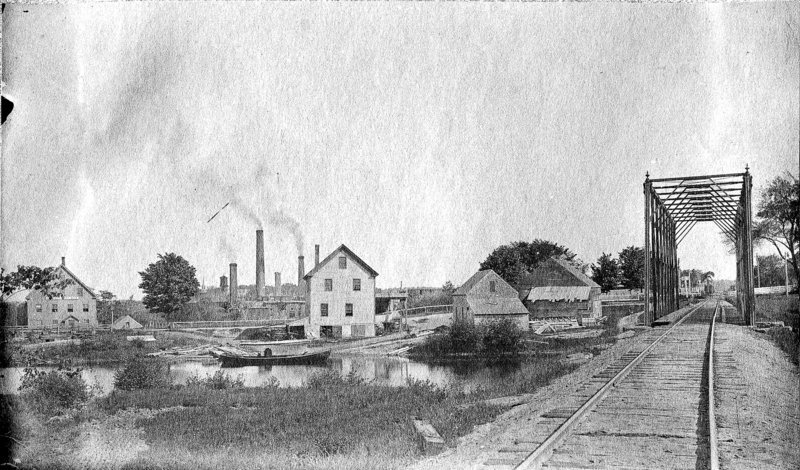YARMOUTH — Patches of snow still dotted the ground when 20-year-old Maren Madsen arrived by train at Yarmouth Junction in May 1892.
She had just returned from visiting family in her native Denmark. At the depot north of town, she set out walking along the tracks, suitcase in hand, her eyes locked on the smokestacks of the sprawling Forest Paper Co. mill complex on the Royal River.
Just above Fourth Falls, she crossed the narrow planks of the train trestle on her hands and knees, fearful of the deep water swirling below. She was eager to get back to work and see old friends.
“That was what I was aiming for,” Maren Madsen Christensen wrote in her memoir, “From Jutland’s Brown Heather to the Land Across the Sea.”
Nearly 120 years later, the Yarmouth Historical Society is preparing to establish the Yarmouth History Center on the very riverbank where Maren Madsen walked. Construction is expected to start in April.
With substantial help from grandsons of L.L. Bean, the society is in the final stages of raising just over $1 million to renovate and build a 1,600-square-foot addition to the former Yarmouth Water District building on East Elm Street, said John Palmer, a historical society trustee and a fundraising co-chairman.
The center will be a repository and gallery for town history dating back to the Abenaki Indians and the first British settlers, who came here in 1636. Established as North Yarmouth — the name distinguished it from its predecessor on Cape Cod — the town originally included today’s Cumberland, Pownal, Freeport and Harpswell.
The center will feature artifacts, photographs, stories and educational programs about the town’s once-bustling shipbuilding and manufacturing industries. Four major shipyards operated on the waterfront from 1850 to 1890, launching a dozen vessels in 1876 alone, said Amy Thompson, the society’s program director.
From the late 1600s through the 1960s, a total of 57 mills and manufacturing plants operated along the Royal River, Thompson said. The Forest Paper Co. complex covered 10 acres and dominated the paper-making industry from 1874 to 1923.
The center also will recognize some of the people who have helped to preserve Yarmouth’s history, including one of the society’s founders, the late Barbara Bean Gorman, daughter of L.L. Bean’s founder and the mother of Leon Gorman of Yarmouth and Jim Gorman of Cumberland.
The Bean brothers gave a substantial gift — Palmer wouldn’t say how much — to help establish the history center. The building will be the Barbara Bean Gorman Building, said Executive Director Michael Chaney.
The education and community room will be named the Hamill Room, in recognition of Bill Hamill of Yarmouth, another major supporter.
The Yarmouth Water District has built its new headquarters upriver, and the town will lease the old granite-block building at 118 East Elm St. to the society for $1 a year for 60 years, Palmer said. The water district is expected to transfer the 2,400-square-foot building to the society in mid-March.
Scott Simons Architects of Portland designed the renovation and expansion project, Chaney said. When it’s done, by the end of this year, the society will move from its third-floor home in the Merrill Memorial Library on Main Street. It will maintain some storage space at the library.
At its new location, the society will be able to host educational programs and encourage visitors to venture into nearby Royal River Park and beyond, Thompson said. Interpretive signs along the river path describe the long-gone mills and factories that employed as many as 400 people at a time.
“They can walk down and actually see remnants of the industries that were here,” Thompson said.
And they can imagine what Maren Madsen saw, on that brisk day in May 1892, when she stepped off the train trestle and strode confidently toward the paper mill.
Staff Writer Kelley Bouchard can be contacted at 791-6328 or at:
kbouchard@pressherald.com
Send questions/comments to the editors.






Comments are no longer available on this story